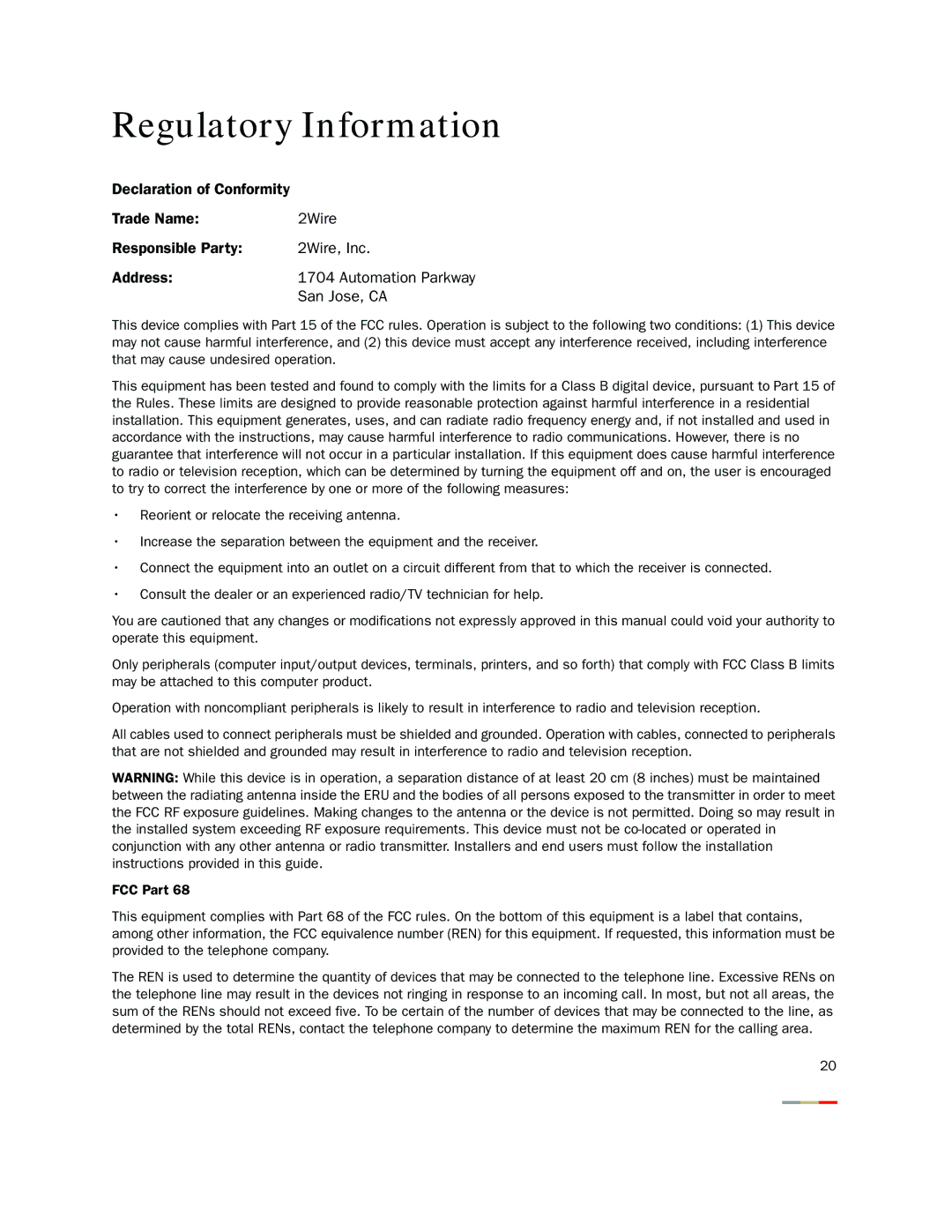1700HW, 1800HG, 1701HG specifications
The 2Wire 1701HG, 1800HG, and 1700HW are modem/router devices that were popular in the early days of DSL (Digital Subscriber Line) technology. These devices provided users with a reliable and efficient way to establish internet connections from their homes or offices, allowing multiple devices to access the internet simultaneously.The 2Wire 1701HG is a DSL modem that features built-in wireless capabilities, providing an array of functionalities for home networking. It supports ADSL and ADSL2+ standards, enabling faster internet speeds and improved performance over conventional DSL. One of its standout features is the ability to connect multiple devices, both wired and wirelessly, without compromising the bandwidth. The integrated firewall and security features help protect the network from unauthorized access, enhancing the overall user experience.
Similarly, the 2Wire 1800HG is designed for higher performance needs. This model supports ADSL2+ as well and is equipped with four Ethernet ports for direct connections to devices like computers and printers. It includes advanced routing features, making it suitable for small offices or home environments where multiple users may be streaming videos, gaming, or working simultaneously. The hardware is designed to handle higher data loads efficiently, ensuring a stable internet connection even under demanding usage.
The 2Wire 1700HW takes a different approach by offering a more robust solution. It supports both the basic DSL connection and wireless connectivity options, making it versatile for various networking needs. Designed for users who require extensive coverage, the 1700HW features multiple antennas to enhance wireless range and signal strength, ensuring better connectivity in larger homes or offices.
All these devices operate on the latest technologies available during their time, such as QoS (Quality of Service) to manage bandwidth allocation, ensuring priority for important applications like video streaming or VoIP. Additionally, they come with user-friendly web interfaces for easy setup and management, making it accessible even for users with minimal technical expertise.
Overall, the 2Wire 1701HG, 1800HG, and 1700HW remain noteworthy for their contributions to home networking technology, providing reliable, high-speed internet access and a range of features that laid the groundwork for future innovations in the field.
